Nervous System Assignment Help
Looking for anatomy help on the topic of nervous system? Get the assistance from tutors of assignmenthelp.net.
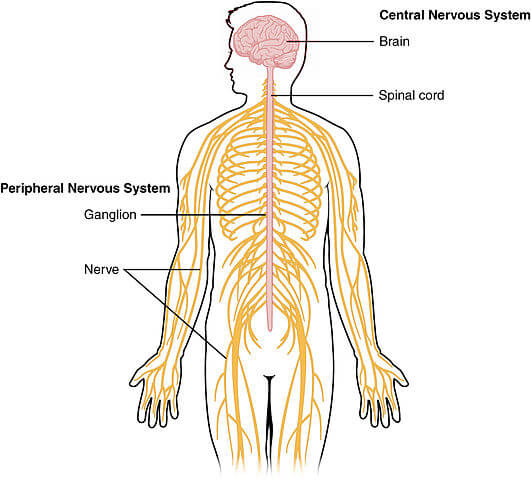
Nerves are present in the entire body interconnecting different organs and tissues. The brain and the spinal cord form central nervous system whereas the sensory nerves and sense organs forms peripheral nervous system. The nervous system is made of two types of cells: Neurons and Neuroglia.
Cells of nervous system
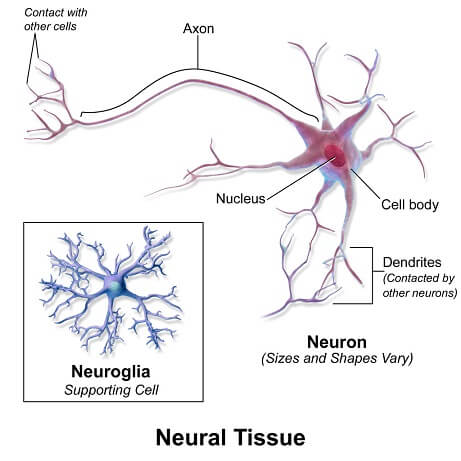
Nervous System Assignment Help By Online Tutoring and Guided Sessions at AssignmentHelp.Net
Neurons
These are also called nerve cells that communicate with other cells of the body through electrochemical signals. Nucleus, mitochondria along with many other cell organelles make the cell body of neuron. Extending from the cell body is a tree like structure called dendrites that receive the signals from surrounding cells, neuron and sensory receptors. Axons are another important parts that extend from cell bodies to send signals to other neurons and effector cells. Neurons are of three types: Afferent neurons, efferent neurons and interneurons.
- Afferent neurons: These neurons transmit sensory signals from body receptors to the CNS. They are also called sensory neurons.
- Efferent neurons: These neurons transmit signals from CNS to effector organs in the body. They are also called motor neurons.
- Interneurons: These nerves form complex set of network allowing interpretation of information received from afferent neurons and hence directing function of the body through efferent neurons.
Neuroglia: These are helper cells of the nervous system. They help neurons by insulation, protecting and feeding them. Hence, neuroglia protects neurons and therefore helps in maintaining an appropriate function of nervous system.
Central Nervous System (CNS)
Brain
It is soft organ present inside cranial cavity. It is protected by bones of skull. It is the main part of the body that helps in processing and executing the information. It is also the center of thinking, emotions, memory, planning etc. and Apart from this brain also controls the function of all other organs in the body. It is divided into three main parts: hindbrain, midbrain and forebrain.
At assignmenthelp.net, you can get in contact with the field specific Biology tutors to seek nervous system Assignment Help on any provided topic.
Hindbrain:
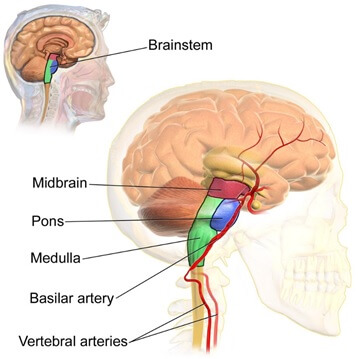
- It is present between spinal cord and hemispheres of the brain.
- Contains many nuclei.
- Helps in number of activities of the body including respiration, digestion etc.
- It consists of cerebellum, medulla oblongata (myelencephalon) and pons (metencephalon). Cerebellum is present behind the brainstem (Midbrain, medulla and pons) and helps to perform number of activities in human body like balancing, coordination, walking etc. Medulla oblongata connects spinal cord to pons and helps to transmit signals between spinal cord and higher portions of the brain. It also controls autonomic functions of the body. The pons is somewhat made up of tracts that connects spinal cord with higher portions of the brain. It acts as a bridge between cerebrum and cerebellum through cerebellar peduncles and contains cells that transmit information from cerebrum to cerebellum.
Midbrain: It is also called mesencephalon and is a connecting link between hindbrain and forebrain. It controls posture, walking and eye movement of the body.
Forebrain: Forebrain contains cerebral cortex and subcortical structures (Telencephalon) and Thalamus and Hypothalamus (Diencephalon). Two hemisphere divides the cerebral hemispheres.
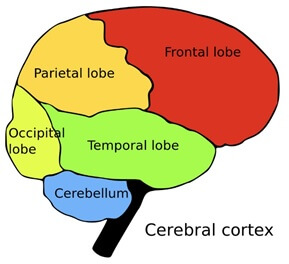
- Cerebral cortex is made of two hemispheres having four lobes named as frontal, parietal, temporal and occipital lobes. Frontal lobe is largest of the four lobe that has olfactory and motor cortex and performs higher cognitive functions. Temporal lobe helps in understanding language, memory and auditory processing. Parietal lobe helps in spatial processing of the brain and attention. Occipital lobe helps in visual processing.
- The subcortical structure consist of basal ganglia and limbic system. Basal ganglia helps in learning skills. Limbic system consists of amygdala and hippocampus. Amygdala helps in processing of emotions and hippocampus helps in building long term memory.
- Corpus callosum is the axon bundle that helps in communication of neurons in left and right hemispheres.
- Thalamus is a key gate between sensory and motor neurons in the CNS and hypothalamus communicate with ANS and thus helps in maintaining homeostasis of the body.
We are 24/7 available to take your doubts on assignment of nervous system. We will provide you solutions to your questions within some hours.
Spinal cord
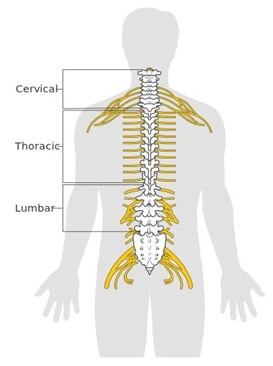
It is a long thin bundle of neurons that begins from medulla oblongata of the brain and continues inferiorly to the lumbar region of the spine. In lumbar region, it is separated into individual nerve fiber called cauda equina that inferiorly continues to sacrum and coccyx. It has gray matter and white matter where white matter helps to conduct nerve from brain to the body and gray matter integrates responses to stimuli.
Meninges
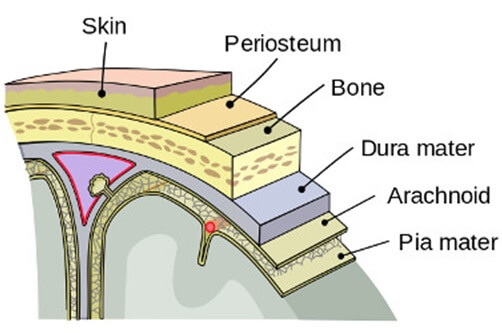
These are the protective covering of CNS that have three layers: Dura mater, arachnoid mater and Pia mater.
- Dura mater is the superficial covering of the CNS that is tough and dense. It is made of dense irregular connective tissue and collagen fibers. Therefore it protects CNS from damage.
- Arachnoid mater is thinner and delicate that Dura mater. It connects with Pia mater through thin fibers.
- Pia mater is present outside the CNS that has blood vessels to nourish the nervous tissue.
Cerebrospinal fluid
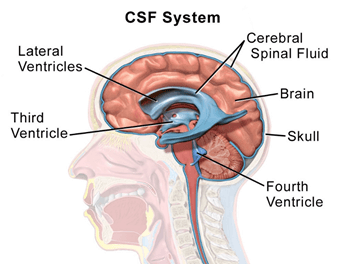
It is the fluid surrounding the parts of CNS. Blood plasma with special structures called choroid plexus makes up CSF. Cerebrospinal fluid is produced at choroid plexus and reabsorbed into at arachnoid villi through blood stream. CSF acts as shock absorber and helps to maintain chemical homeostasis in the CSF.
We provide you nervous system Assignment Help under the effective guidance of your team. You can also come to us for project writing help, essay writing help, making power point presentation or any other academic help in this area.
Peripheral Nervous System (PNS)
Peripheral nervous system is divided into sensory-somatic nervous system and autonomic nervous system. The sensory-somatic nervous system is again divided into 12 pairs of cranial nerves and 31 pairs of spinal nerves.
Cranial nerves
These nerves extends from lower side of the brain.
| Nerves | Type | Function | |
|---|---|---|---|
| I | olfactory | Sensory | Smell |
| II | optic | Sensory | Vision |
| III | Oculomotor | Motor | Eyeball and eyelid muscle |
| IV | Trochlear | Motor | Eyeball muscle |
| V | Trigeminal | Mixed | Chewing, sensation in mouth and face |
| VI | Abducens | Motor | Eyeball movement |
| VII | Facial | Mixed | Taste, facial muscle and salivary glands. |
| VIII | Auditory | Sensory | Hearing and balance |
| IX | Glossopharyngeal | Mixed | Taste and swallowing |
| X | Vagus | Mixed | Main nerve of PNS |
| XI | Accessory | Motor | Moving head, shoulder and swallowing |
| XII | Hypoglossal | Motor | Tongue muscles |
Spinal nerve
Spinal nerve extends from left and right side of spinal cord and are 31 in pairs. They are mixed having sensory as well as motor neurons. These 31 pairs are divided into 5 major groups: 8 pairs of cervical nerve, 5 pairs of lumbar nerve, 5 pairs of sacral nerve, 12 pairs of thoracic nerves and 1 pair of coccygeal nerve. Each of this nerve exit through intervertebral foramen of the spinal cord.
When you don’t have enough time to research on the topics of nervous system or when you are lacking behind to present ideas on any topic of this subject, you can choose our service for nervous system Assignment Help to get help from learned and experienced team.
Autonomic Nervous System (ANS)
It consists of sensory neurons and motor neurons which together help in monitoring the condition of internal environment and hence bringing required changes. Autonomic nervous system differ from sensory-somatic system in using two groups of motor neurons instead of one which are preganglionic (arise in CNS and run to ganglion in the body) and postganglionic neurons (runs to effector organs). Basically autonomic nervous system can be classified into two main types:
- Sympathetic nervous system
- Parasympathetic nervous system
Sympathetic nervous system
The preganglionic motor neurons of this nervous system comes from the spinal cord, passing into sympathetic ganglia, organized in two chains running parallel to and either side of the spinal cord. Acetylcholine is the neurotransmitter of preganglionic sympathetic nervous system whereas the noradrenaline is the neurotransmitter of postganglionic neuron. Sympathetic nervous system arranges the body for any emergencies conditions.
Parasympathetic nervous system
The major nerve of parasympathetic system is the Vagus nerve that originates in medulla oblongata. Also there are many preganglionic parasympathetic nerves that extends from brain and lower point of spinal cord. Each of this nerve synapses with some postganglionic neurons that are present within or near the effector organs. Acetylcholine is the neurotransmitter of preganglionic parasympathetic nerves along with some postganglionic nerve, whereas nitric oxide is the neurotransmitter of postganglionic neurons. Parasympathetic nervous system brings body back to normal condition after the alteration caused by sympathetic nervous system is resolved. The Vagus nerve on the other hand keeps check on the inflammation.
For any help and assistance with your academic assignment and homework on nervous system, contact us through email or phone. We provide assistance for nervous system Assignment Help within the provided deadline.


